The soul of your home resides not just in its structure, but in the carefully curated details that reflect your personality and aspirations. As an interior designer passionate about making beautiful spaces accessible, I know that transformative decor doesn’t require a complete overhaul or a limitless budget. Often, it’s the strategic, inspired touches that breathe new life into a room. Ready to elevate your surroundings? Let’s dive into 20 of the best room decor ideas guaranteed to inspire your next home refresh, blending style, function, and undeniable charm.
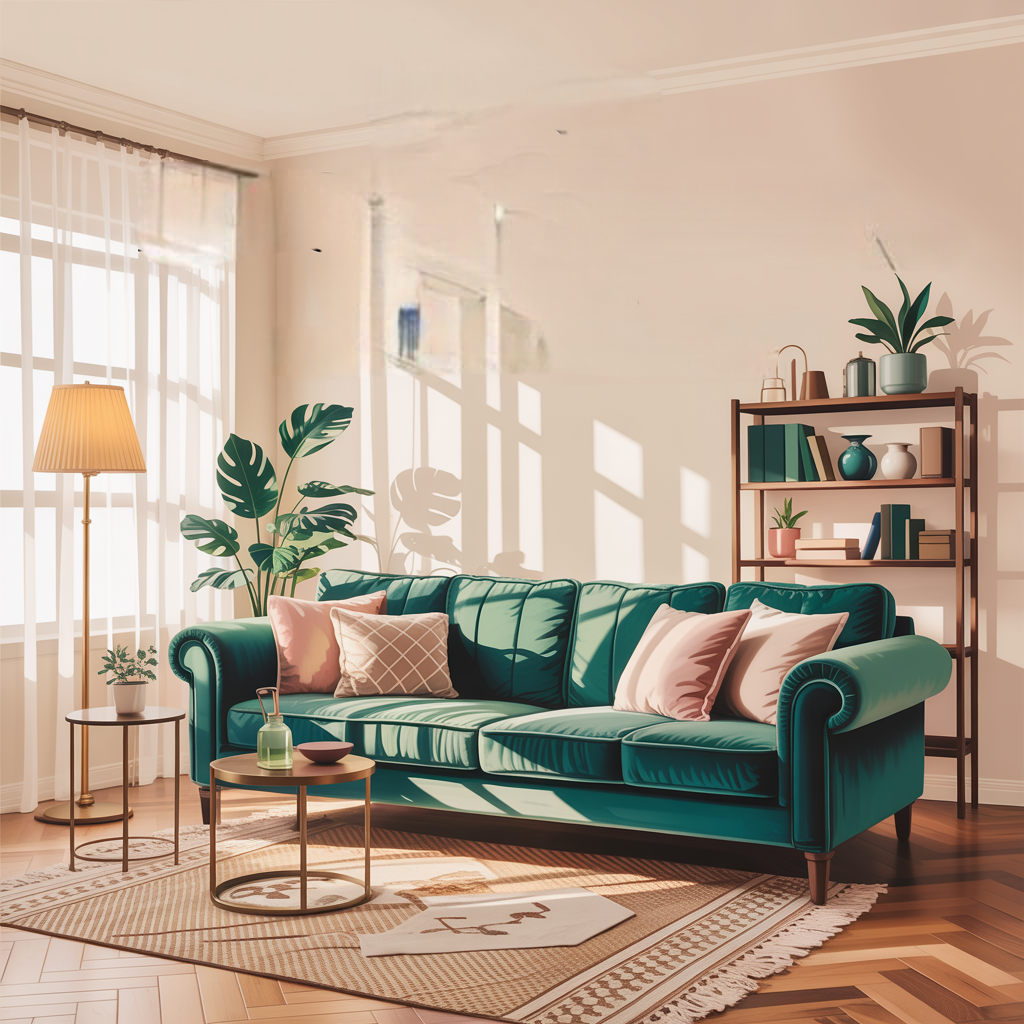
1. Embrace the Power of Statement Lighting Fixtures
Lighting is the jewelry of a room. Swap out generic ceiling fixtures for something that commands attention – a sculptural chandelier, a cluster of modern pendants, or an oversized woven rattan piece. Statement lighting instantly becomes a focal point, sets the mood, and adds significant architectural interest. Consider scale carefully; a fixture that’s too small gets lost, while one too large overwhelms.
Think beyond the dining room. A stunning pendant can anchor a living room seating area, a unique floor lamp can define a reading nook, and an artistic sconce can add drama beside a bed. Layered lighting is key – combine your statement piece with ambient and task lighting for a truly functional and beautiful scheme.
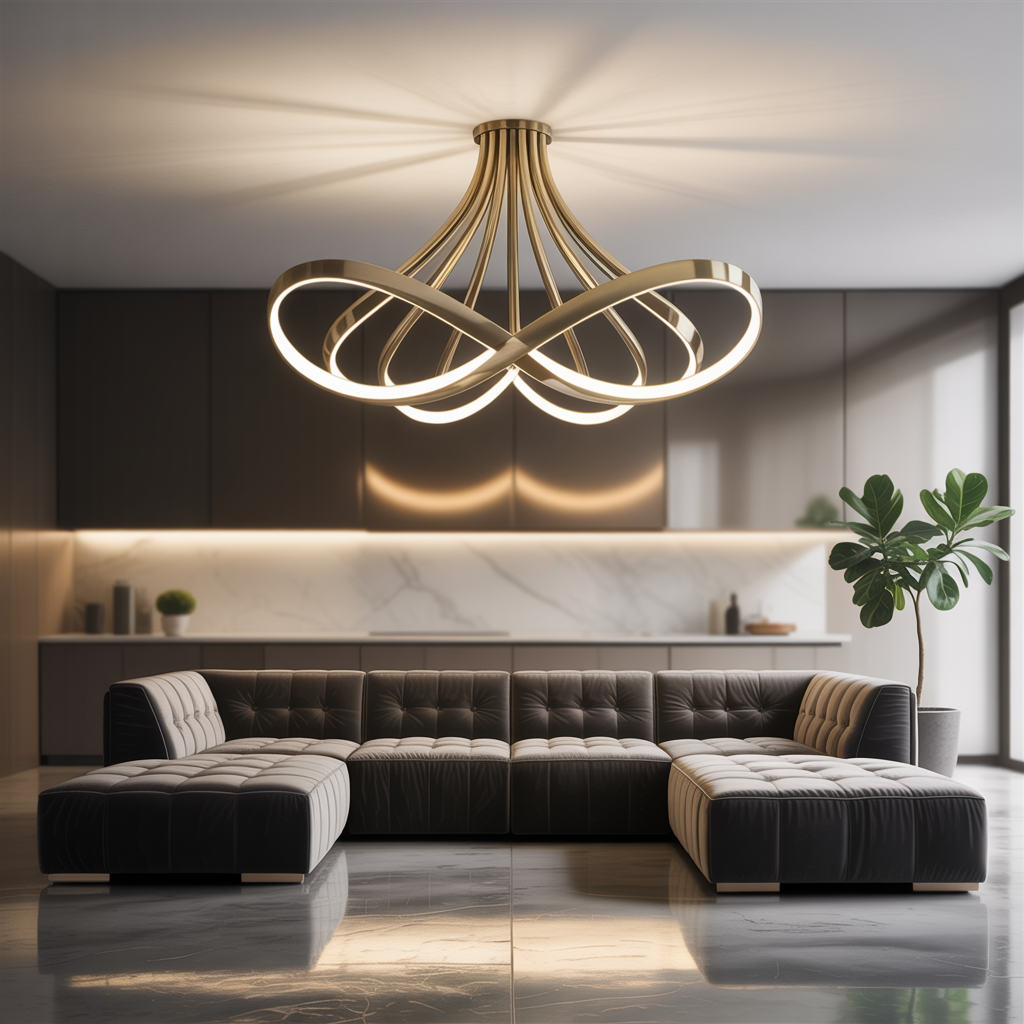
- Pro Tip: Use dimmer switches on your main statement lights! This simple addition gives you ultimate control over the ambiance, allowing you to shift from bright task lighting to a soft, intimate glow instantly.
2. Master the Art of the Gallery Wall
A gallery wall is a quintessential way to inject personality and visual intrigue. It’s more than just hanging pictures; it’s about creating a curated composition. Mix and match framed artwork, photographs, mirrors, textiles, small shelves holding objects, or even sculptural pieces. The key lies in finding a unifying element – perhaps consistent frame colors (black, white, natural wood), a cohesive theme (botanical prints, travel memories), or a specific color palette running through the art.
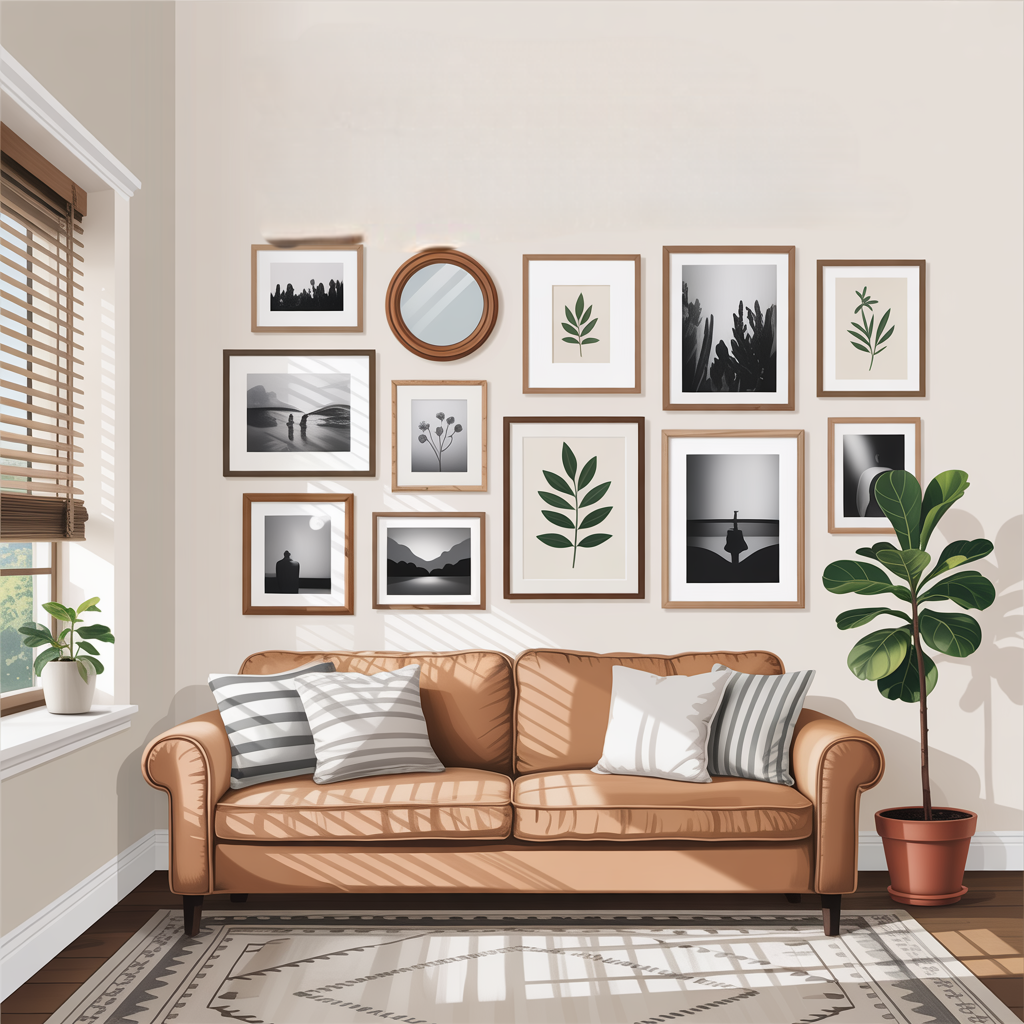
Don’t be afraid to experiment with layouts. Arrange pieces on the floor first to find a composition you love before committing to nails. Asymmetry often feels more dynamic and modern than rigid grids. Leave breathing room between pieces (2-3 inches is a good start) and consider the overall scale relative to your wall.
3. Layer Textures for Depth & Warmth
Texture is the secret weapon for creating a space that feels rich, inviting, and visually interesting. Smooth surfaces (glass, metal, polished wood) feel sleek but can be cold. Introduce coziness and contrast with chunky knits (throws, pillows), nubby bouclé, smooth leather, woven baskets, fluffy sheepskins, rough-hewn wood, or plush velvet.
Layering these varied textures adds incredible depth. Think a sleek leather sofa adorned with velvet and cable-knit pillows, sitting atop a plush wool rug, beside a rough wooden side table holding a smooth ceramic lamp. This tactile interplay makes a room feel designed and lived-in, appealing to both the eye and the touch.
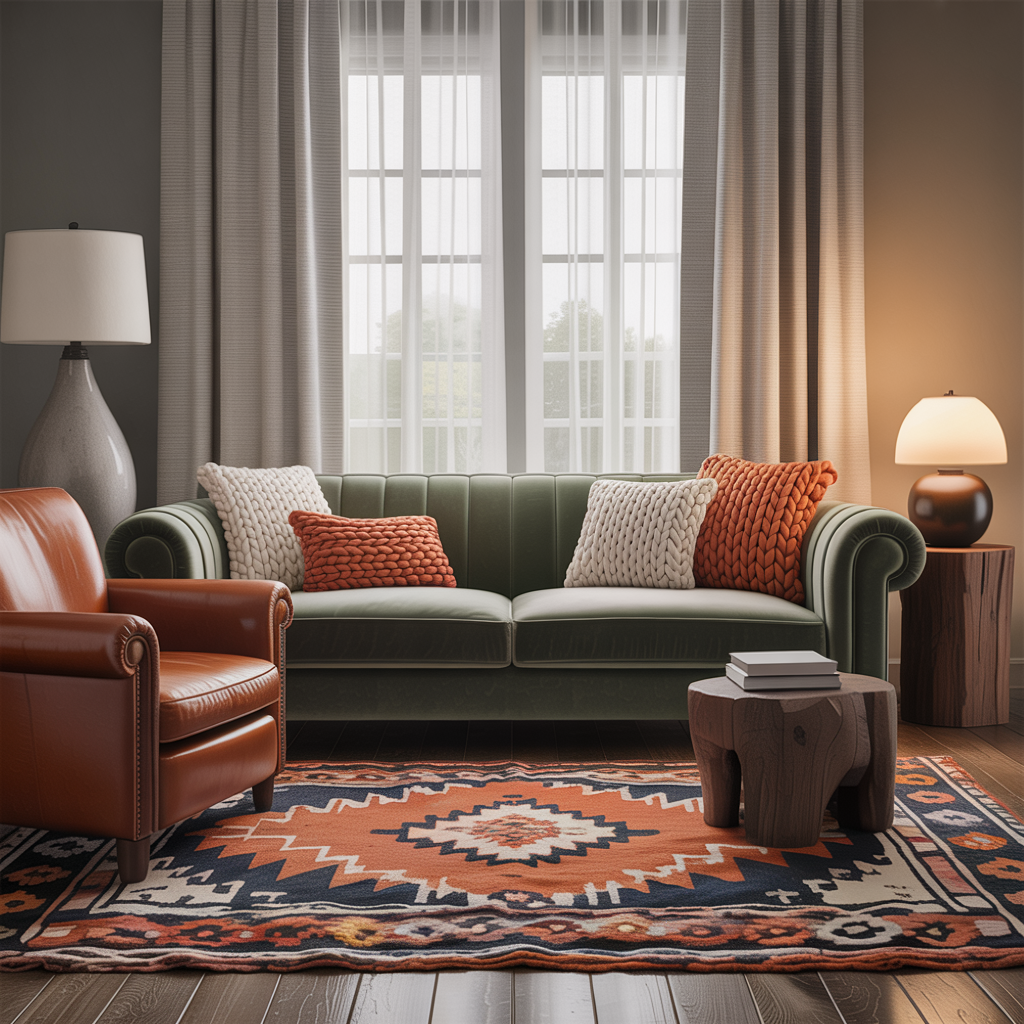
- Pro Tip: Add texture overhead! Consider a textured ceiling finish (like Venetian plaster or wood planks) or a light fixture made of rattan, woven fibers, or ribbed glass to draw the eye up and complete the sensory experience.
4. Introduce Pops of Color Strategically
You don’t need to paint every wall or buy all new furniture to energize a room with color pops. Strategic injections of vibrant or saturated hues can be incredibly effective. This could be an accent wall in a bold paint color or dramatic wallpaper, a brightly colored sofa or armchair, vibrant curtains, or a collection of colorful accessories like cushions, vases, or artwork.
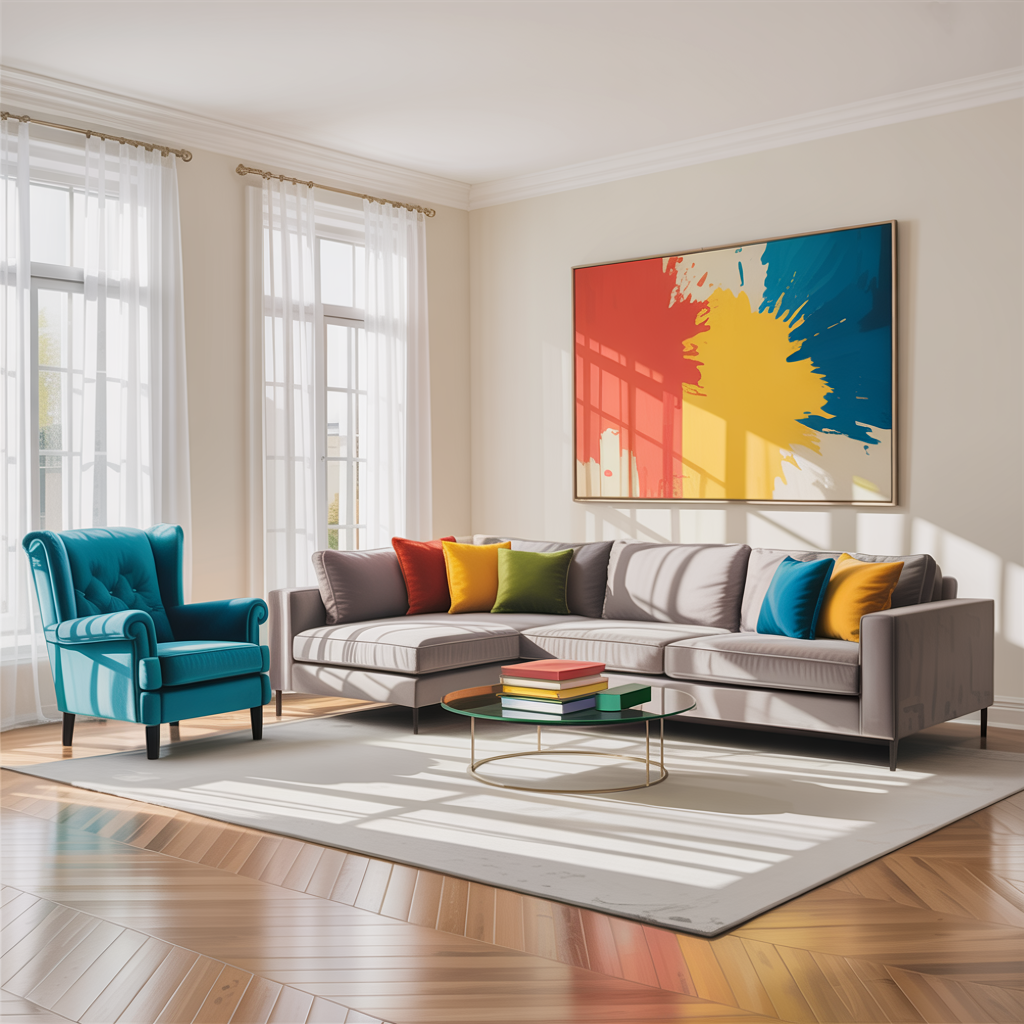
The magic lies in balance. Anchor bold colors with plenty of neutrals (whites, greys, beiges, blacks) to prevent overwhelm. Use the color wheel: complementary colors (opposites) create high contrast and energy, while analogous colors (neighbors) offer a more harmonious feel. Start small if you’re hesitant – a single vibrant armchair or a set of colorful coffee table books can make a big impact.
5. Maximize Mirrors for Light & Space
Mirrors are arguably the most versatile and effective decor tool. They instantly bounce light around a room, making even the smallest or darkest spaces feel brighter and airier. Strategically placed, they can also create the illusion of more space by reflecting views and extending sightlines.
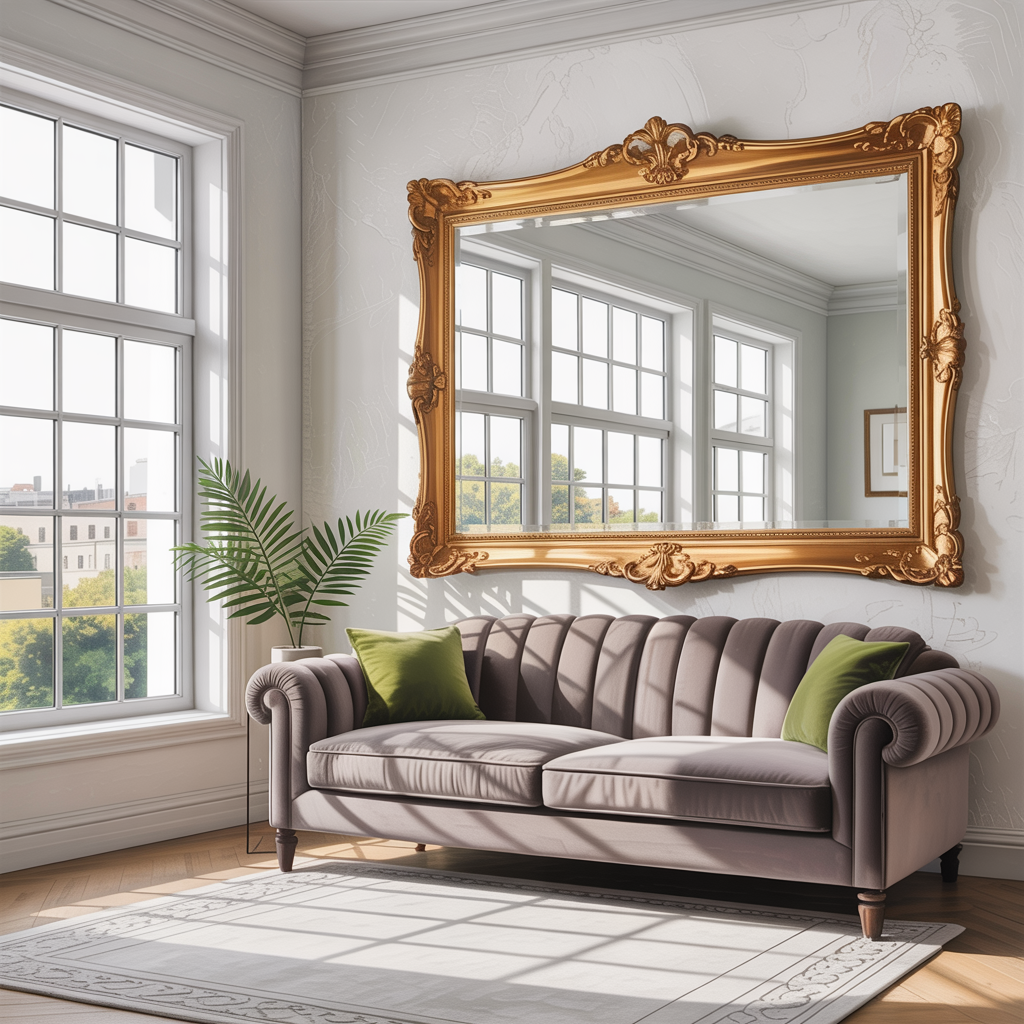
Place a large mirror opposite a window to maximize natural light capture. Use an oversized mirror as a statement piece above a sofa, fireplace, or console table. Lean a tall floor mirror in a corner to add height and dimension. Group smaller mirrors in interesting arrangements for an artistic touch. Consider the frame – an ornate frame adds glamour, a simple wood frame feels organic, while a frameless mirror offers a clean, modern look.
6. Bring the Outdoors In with Plants & Botanicals
Indoor plants are more than just decor; they purify air, boost mood, and add vibrant life to any interior. From towering fiddle leaf figs and graceful palms to cascading pothos and sculptural snake plants, there’s a plant for every light level and care commitment. Botanical prints in artwork, pillows, or wallpaper are another fantastic way to harness nature’s calming aesthetic.
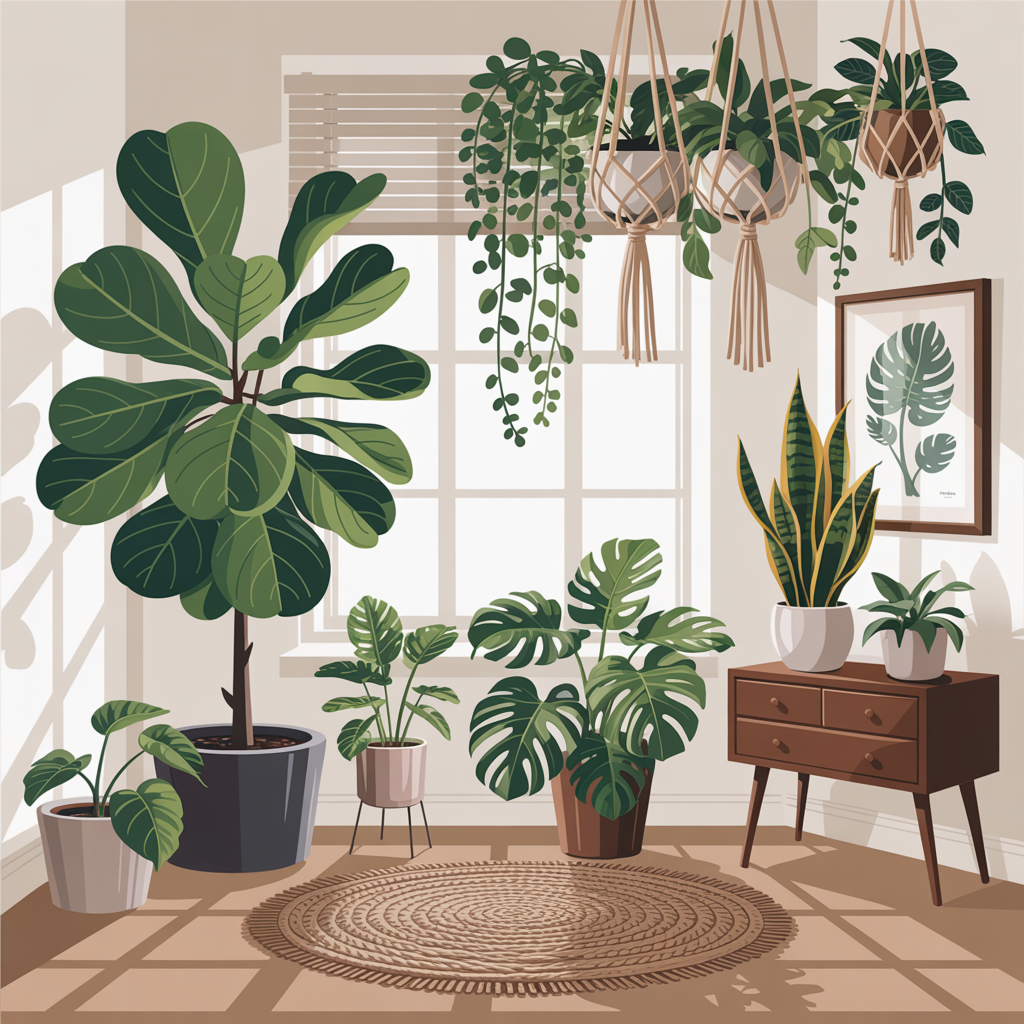
Group plants of varying heights and textures for a lush “urban jungle” corner. Place a statement plant in a beautiful planter to anchor a space. Hang trailing plants in macramé hangers near windows. Don’t forget cut branches or dried botanicals like pampas grass for a sculptural, low-maintenance option.
7. Define Zones with Area Rugs
Area rugs are foundational to room definition, especially in open-plan spaces. They anchor furniture groupings, create visual separation between different functional areas (like living and dining), add warmth underfoot, and introduce crucial pattern, color, and texture. Ensure your rug is appropriately sized – in a seating area, front legs of all furniture should ideally sit on the rug.
| Rug Size Guide for Seating Areas | |
|---|---|
| Room Size | Recommended Rug Size |
| Small (under 10’x10′) | 5’x8′ |
| Medium (10’x12′ – 14’x16′) | 8’x10′ |
| Large (over 14’x16′) | 9’x12′ or larger |
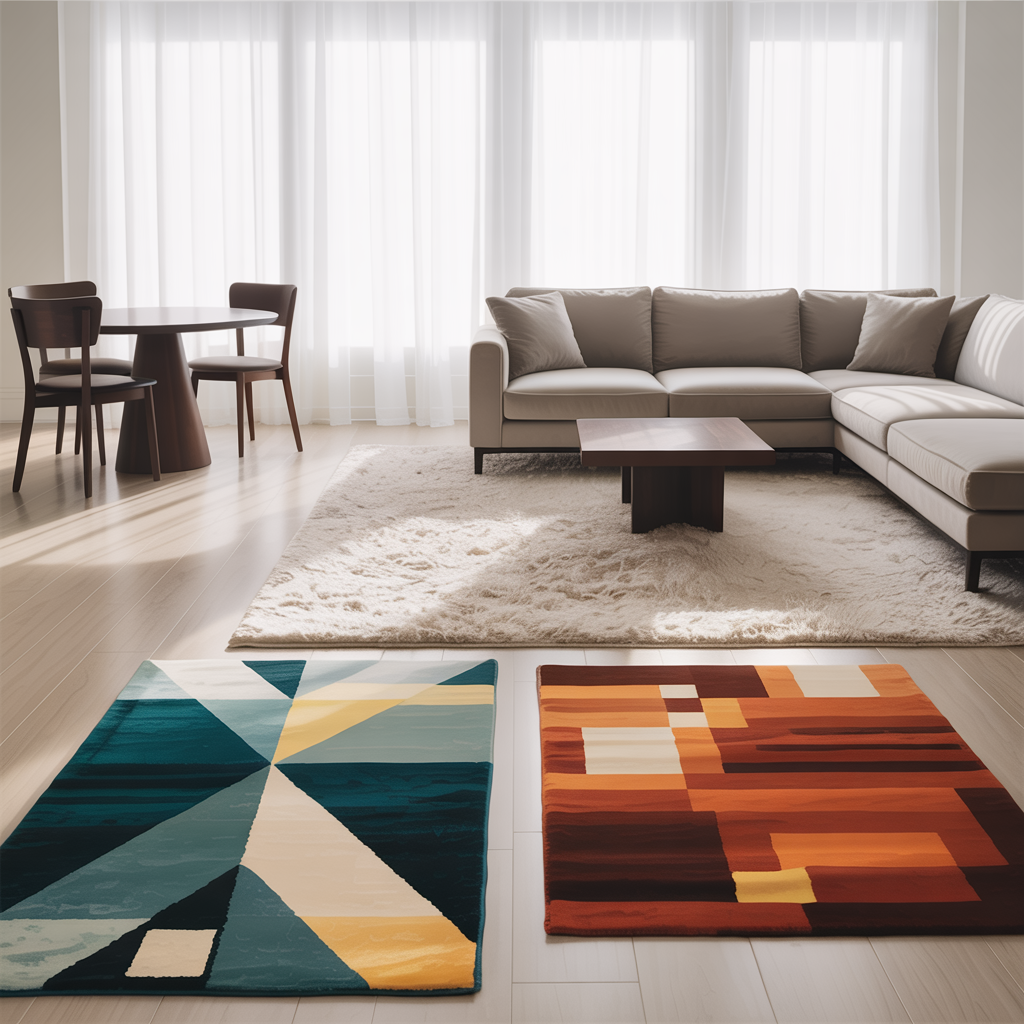
Consider material: Wool is durable and luxurious, synthetic fibers are stain-resistant and budget-friendly, jute and sisal offer natural texture but can be rough. Layer rugs for added depth – try a natural fiber rug topped with a smaller, patterned vintage piece.
8. Style Your Surfaces Thoughtfully
Tabletop styling turns functional surfaces (coffee tables, console tables, shelves, mantels) into curated vignettes. Avoid clutter by following the “rule of three”: group items in odd numbers for visual harmony. Combine elements of varying heights, shapes, and textures: a stack of books, a sculptural object, a small plant or vase with fresh blooms, and perhaps a candle.
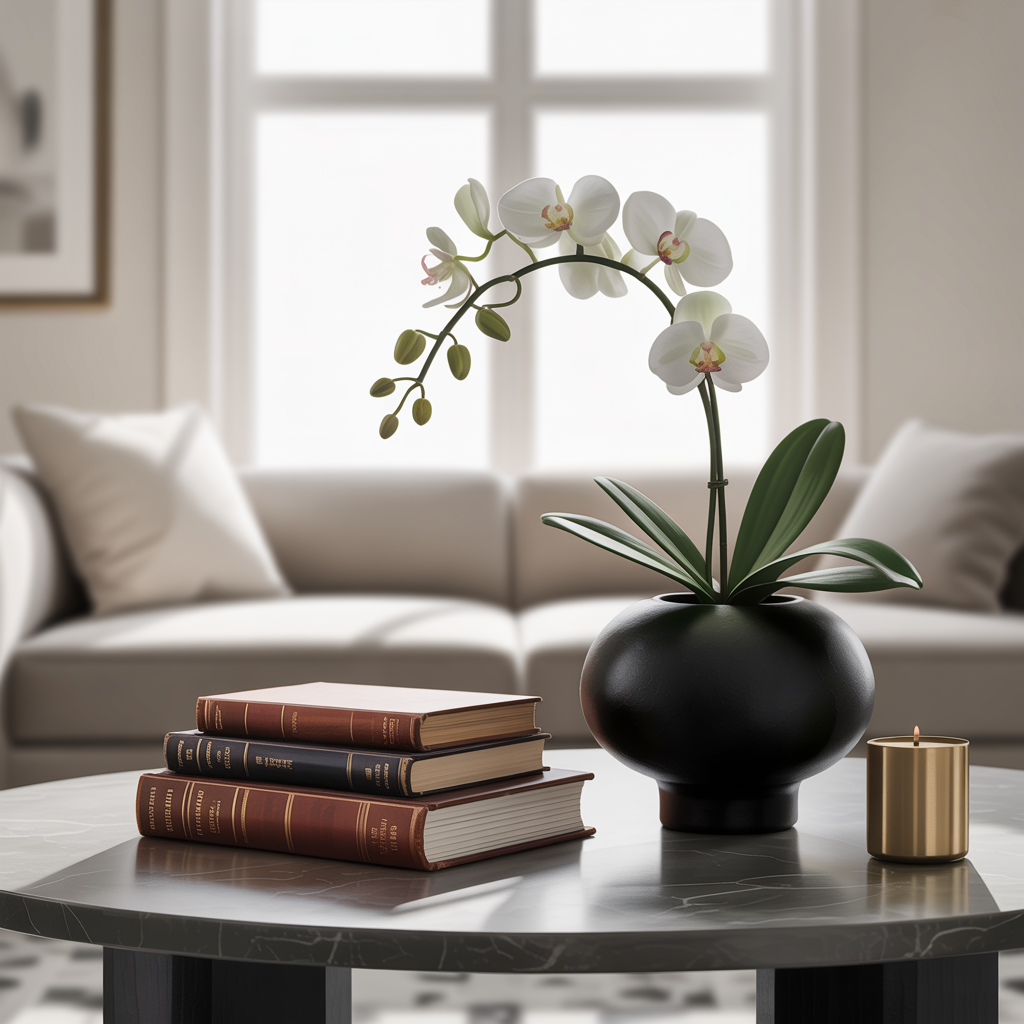
Leave breathing room! Negative space is crucial. Edit ruthlessly and rotate items seasonally to keep things fresh. Think vertically on shelves – lean art, stack books horizontally and vertically, place taller items towards the back. On coffee tables, ensure there’s still space for drinks and remotes.
9. Play with Pattern Mixing
Fearlessly combining patterns adds dynamism and personality. The key to successful pattern mixing is balance. Vary the scale: pair a large-scale floral or geometric with a small-scale stripe, dot, or check. Use a cohesive color palette to tie different patterns together – perhaps two or three main colors repeated throughout the various prints.
Start with a dominant pattern you love (on curtains or an area rug), then layer in secondary and accent patterns on pillows, throws, or smaller upholstered pieces. Incorporate solids and textures to give the eye places to rest. Don’t be afraid to mix florals, stripes, and geometrics – it can look incredibly chic when done thoughtfully.
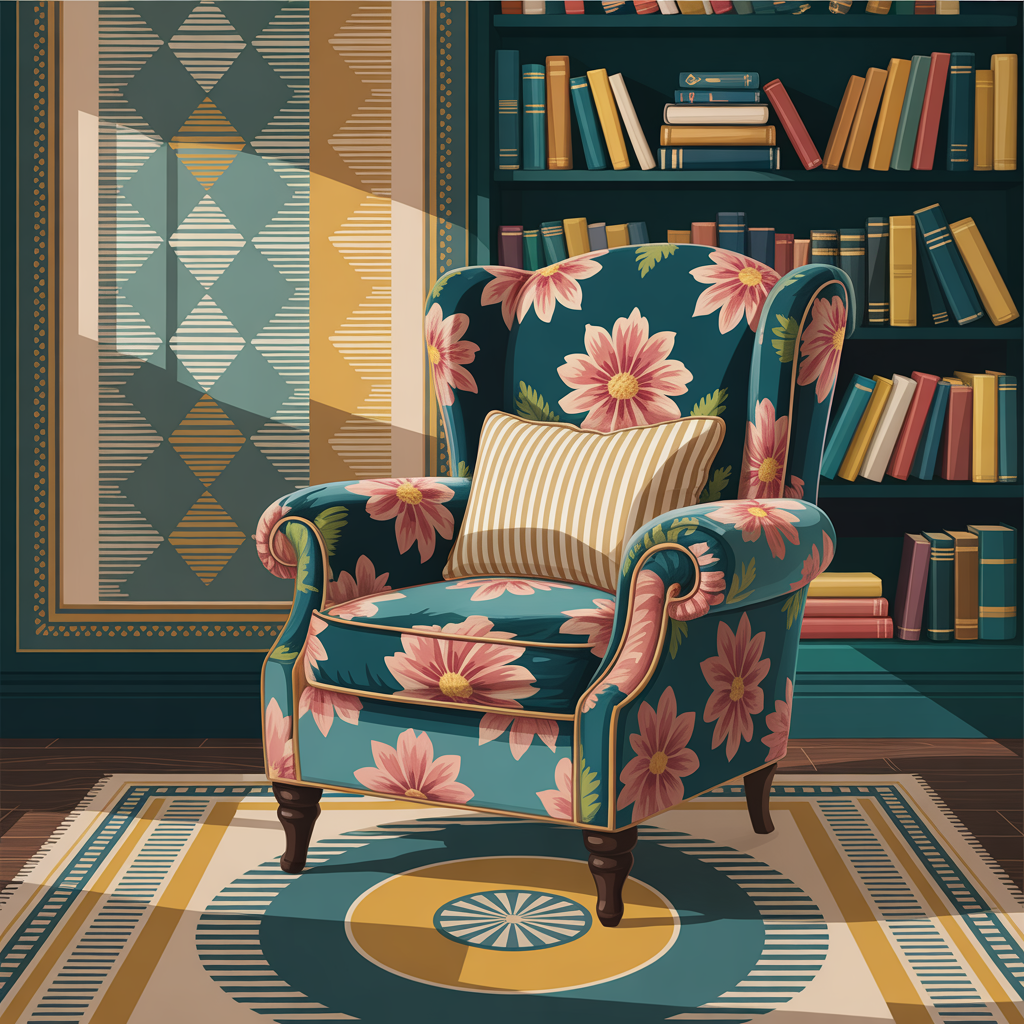
- Pro Tip: Anchor your pattern mix with a neutral base. Walls, large furniture pieces (like sofas or beds) in solid neutrals (white, beige, grey, navy, black) provide a calm backdrop that lets your patterned accents truly sing without overwhelming the space.
10. Incorporate Meaningful Collections
Displaying collections transforms them from stored items into powerful personal decor. Whether it’s vintage cameras, ceramic vases, travel souvenirs, first edition books, or seashells, grouping them together creates impact. Consistency is key: display similar items together (all white ceramics, all framed butterflies, all blue glass bottles).
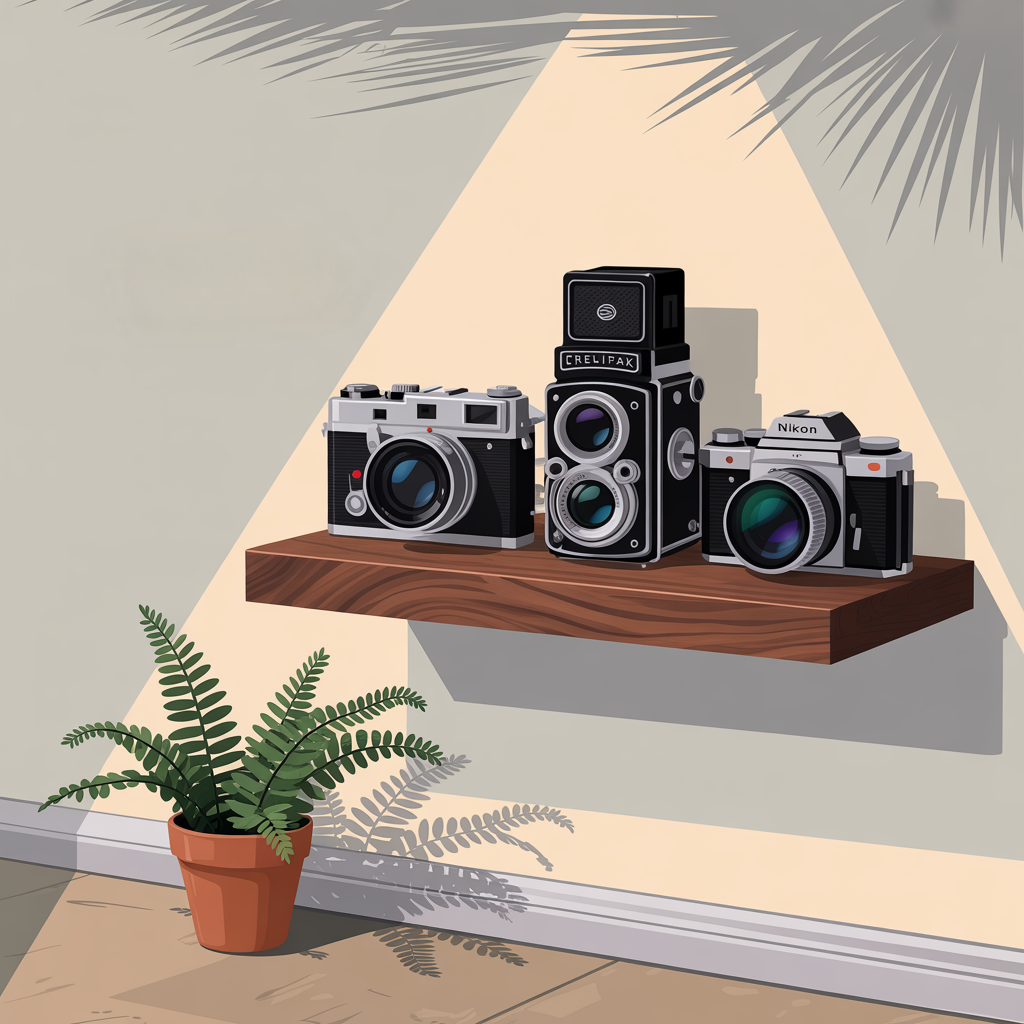
Choose dedicated display spots: floating shelves, a console table, a glass-front cabinet, or a dedicated wall niche. Arrange items thoughtfully – by color, size, or type. Avoid scattering individual pieces around the room; the power comes from the curated grouping. Lighting, like a picture light or small spotlight, can elevate a special collection.
11. Update Hardware for an Instant Facelift
One of the fastest, most affordable, and impactful budget decor upgrades is swapping out dated cabinet knobs, drawer pulls, door handles, and light switch plates. Think of hardware as the jewelry for your cabinetry and doors. This simple change can instantly modernize a kitchen, bathroom, or piece of furniture.
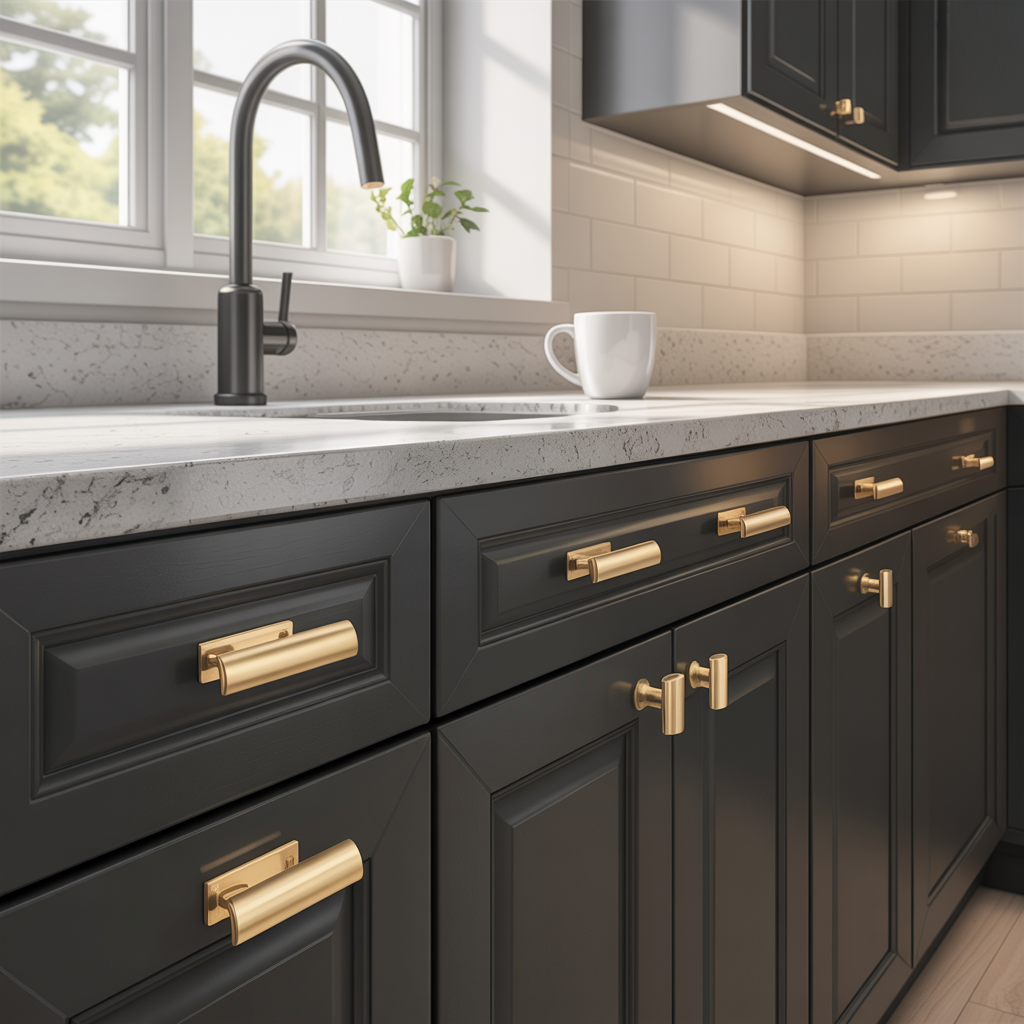
Choose a finish that complements your existing fixtures (faucets, lighting) – popular choices include matte black, brass (polished or aged), chrome, nickel, and unlacquered brass. Consider the style: sleek bars for modern, crystal knobs for traditional, ceramic pulls for cottage charm. Don’t forget hinges if they are visible! A cohesive look makes a huge difference.
12. Utilize Throw Pillows & Blankets Strategically
Throw pillows and blankets are the ultimate tools for adding instant color, pattern, texture, and coziness. They allow for seasonal or trend updates without major commitment. Layer pillows in different sizes and shapes (square, lumbar, round) on sofas and beds. Mix patterns and solids, varying textures like velvet, linen, knit, and faux fur.
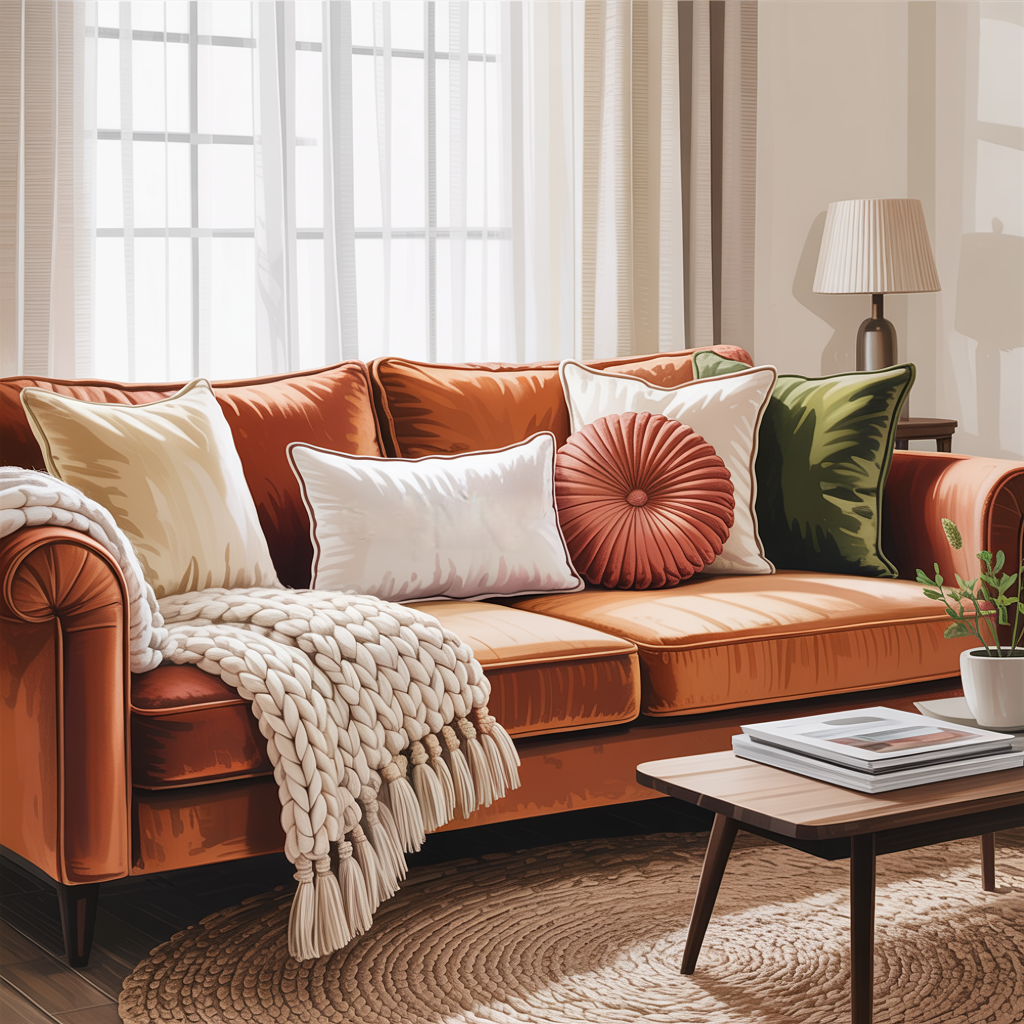
Drape throws casually over the arm of a sofa, the corner of a bed, or the back of an armchair. They invite relaxation and add visual softness. Rotate these textiles with the seasons – lighter linens and cottons for summer, heavier knits and wools for winter. Don’t underestimate the power of a beautifully folded throw blanket in a basket.
13. Create a Focal Point with an Accent Wall
An accent wall instantly draws the eye and defines a space. It’s a fantastic way to add drama, color, or pattern without overwhelming the entire room. Options are endless:
- Bold Paint: The classic choice. Choose a rich, saturated color.
- Dramatic Wallpaper: Florals, geometrics, grasscloth, murals – make a statement.
- Textured Materials: Shiplap, board and batten, stone veneer, reclaimed wood.
- Gallery Wall: Use the accent wall as the backdrop for your curated collection.
- Molding/Paneling: Add architectural detail with picture frame molding or wainscoting.
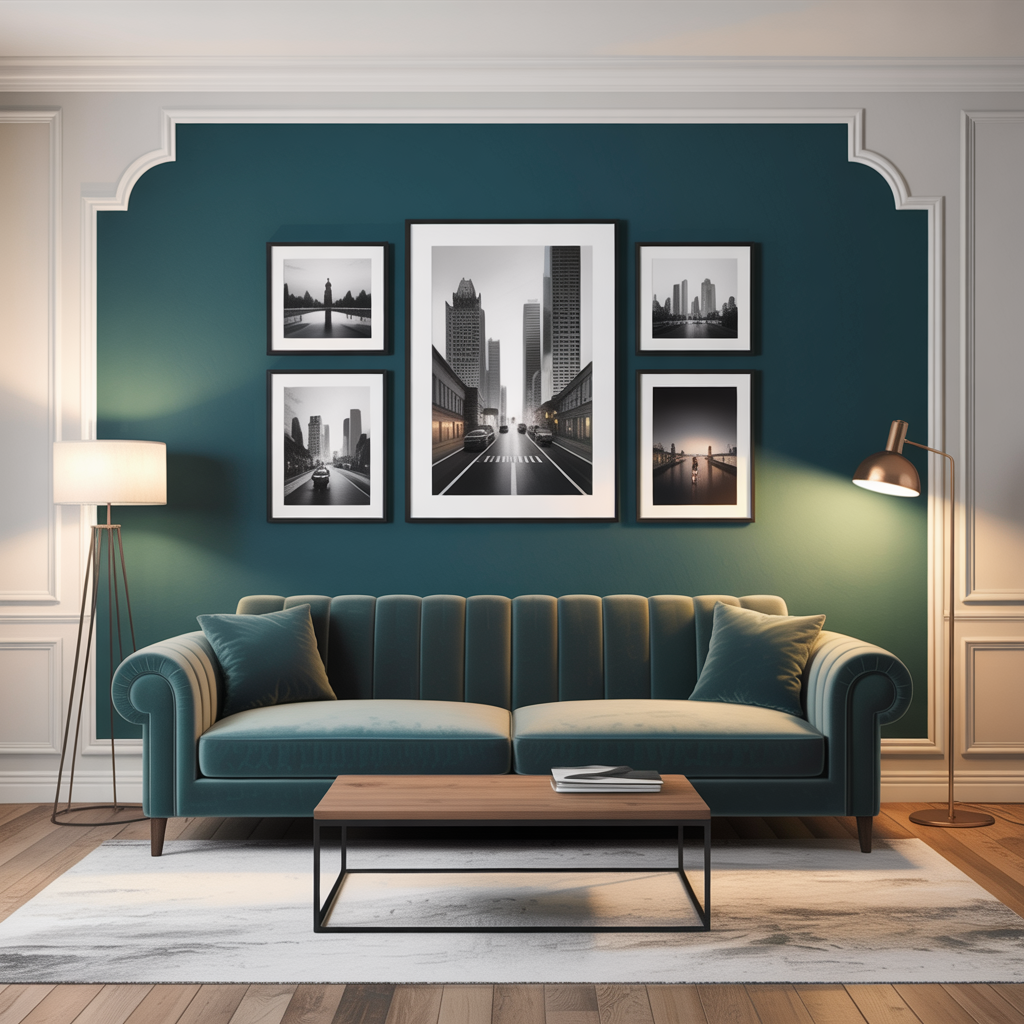
Choose the right wall: typically the one you face when entering the room, behind the bed in a bedroom, or behind the sofa in a living room. Ensure the accent complements the overall decor scheme.
14. Optimize Lighting with Multiple Sources
As mentioned earlier, layered lighting is non-negotiable for a functional and inviting room. Relying solely on an overhead light creates harsh shadows and a flat ambiance. Combine three key layers:
- Ambient Lighting: General illumination (overhead fixtures, recessed lights).
- Task Lighting: Focused light for specific activities (desk lamps, reading lights, under-cabinet lighting).
- Accent Lighting: Highlights features and adds drama (picture lights, track lighting, wall sconces, table lamps).
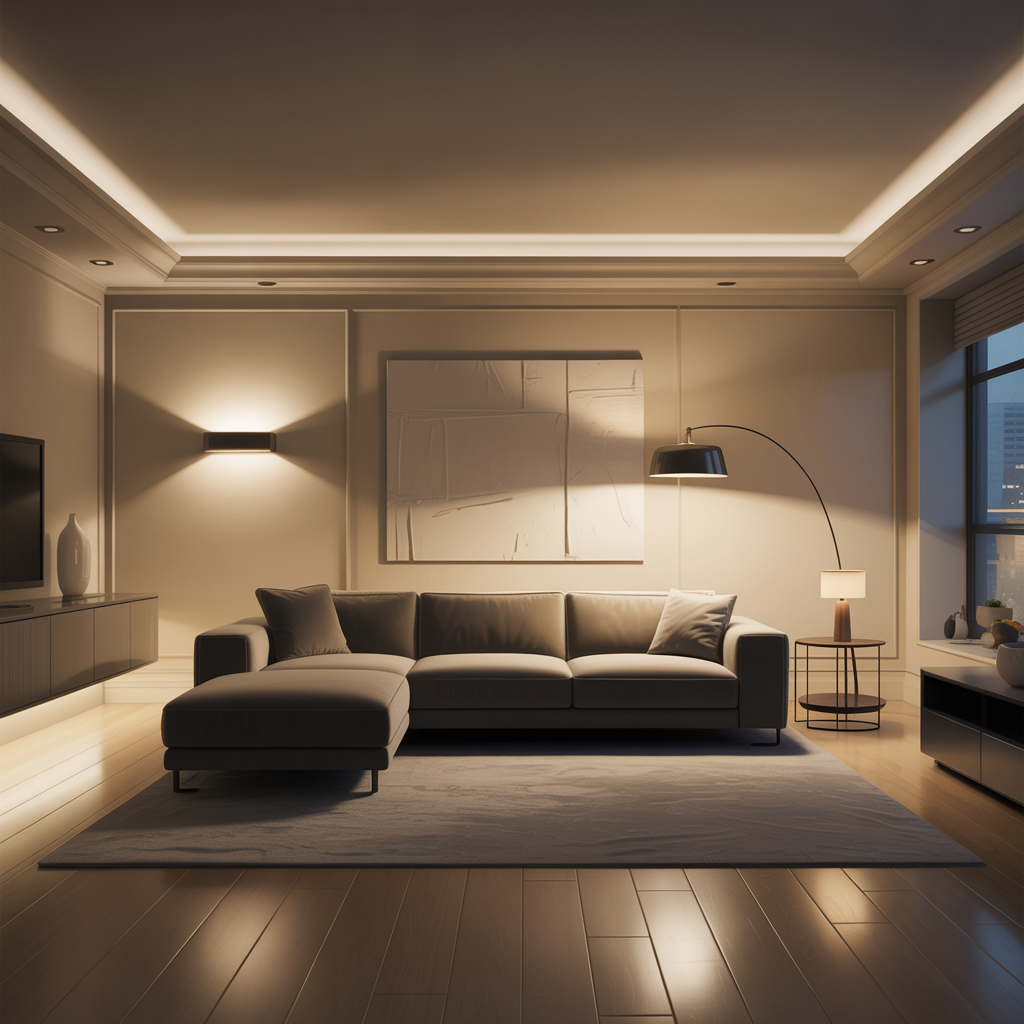
Use dimmers wherever possible. Place floor lamps in dark corners, table lamps on side tables beside seating, and sconces flanking a bed or artwork. This multi-source approach creates pools of light, adds dimension, and allows you to tailor the atmosphere perfectly.
15. Embrace the Beauty of Natural Materials
Incorporating natural materials like wood, stone, rattan, jute, linen, wool, leather, and ceramic brings warmth, texture, and a grounding connection to nature. These elements add authenticity and timeless appeal. Think:
- A live-edge wood coffee table.
- Stone countertops or decorative bowls.
- Rattan or woven chairs and baskets.
- A jute area rug.
- Linen curtains and upholstery.
- Leather accent chair.
- Terracotta pots or ceramic vases.
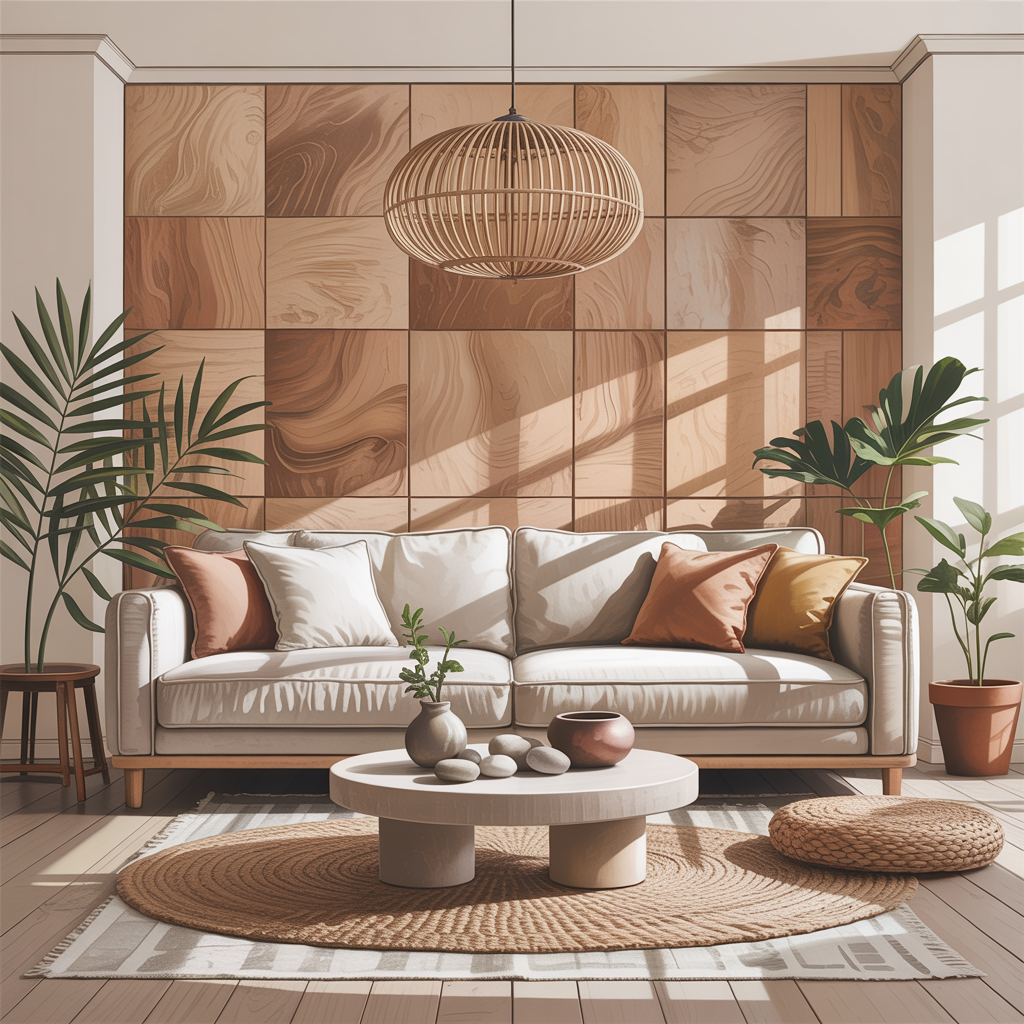
These materials often age beautifully, developing a patina that adds character. They work seamlessly across styles, from rustic and Scandinavian to modern and bohemian. Mixing several creates a rich, organic feel.
16. Add Height with Tall Elements
Drawing the eye upwards makes a room feel larger and more impressive. Incorporate tall decor elements:
- Floor Lamps: Choose slender, tall designs.
- Bookcases: Fill them vertically, styling the top shelves.
- Tall Potted Plants: Fiddle leaf figs, palms, olive trees.
- Floor-to-Ceiling Curtains: Hang rods close to the ceiling and let curtains pool slightly on the floor.
- Large Artwork or Mirrors: Hung vertically.
- Statement Floor Vases: With branches or tall dried grasses.
- Architectural Details: If possible, consider adding beams or higher doors.
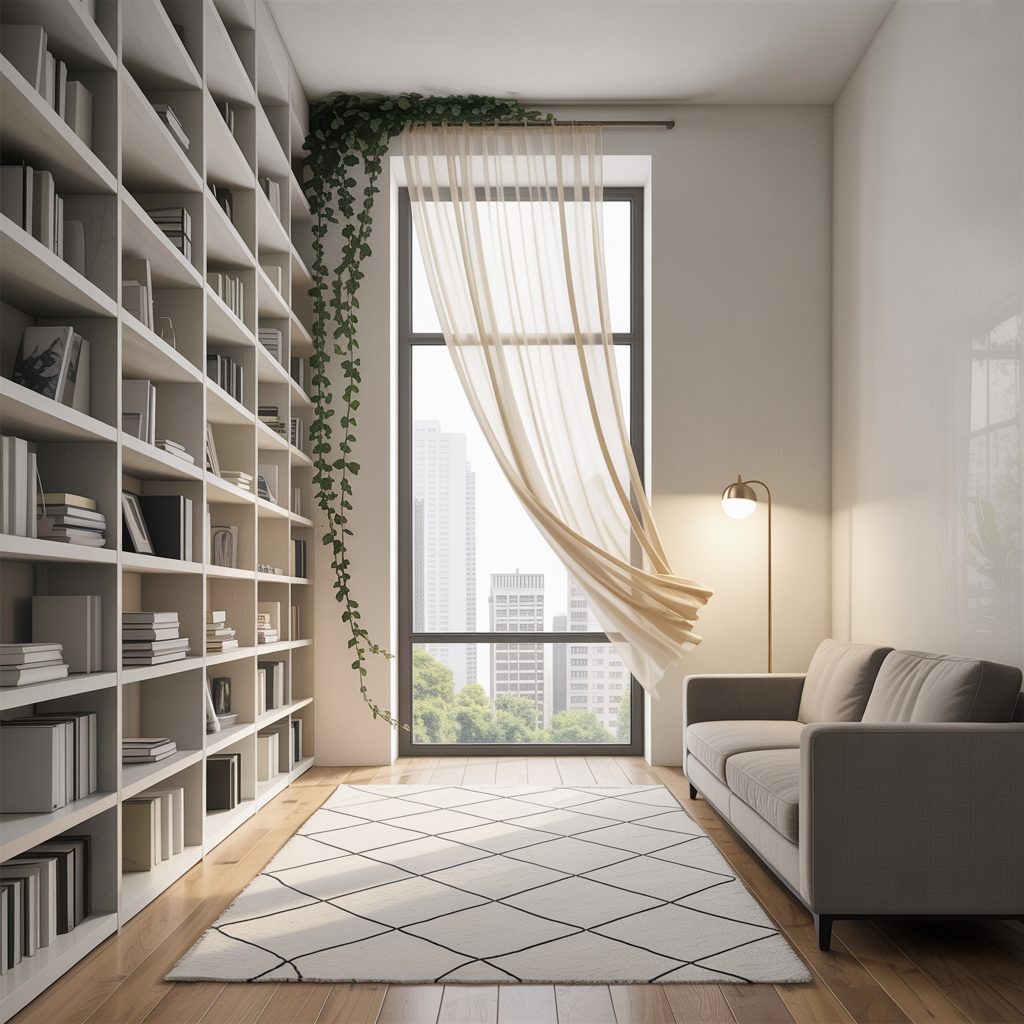
This vertical emphasis counterbalances furniture sitting lower to the ground and creates a more dynamic and spacious feel.
17. Incorporate Vintage & Thrifted Finds
Vintage decor and thrifted treasures add soul, history, and uniqueness that mass-produced items often lack. Scouring flea markets, antique shops, thrift stores, and online marketplaces can yield incredible one-of-a-kind pieces – a mid-century sideboard, a quirky lamp, a set of vintage glasses, an ornate picture frame, a Persian rug.
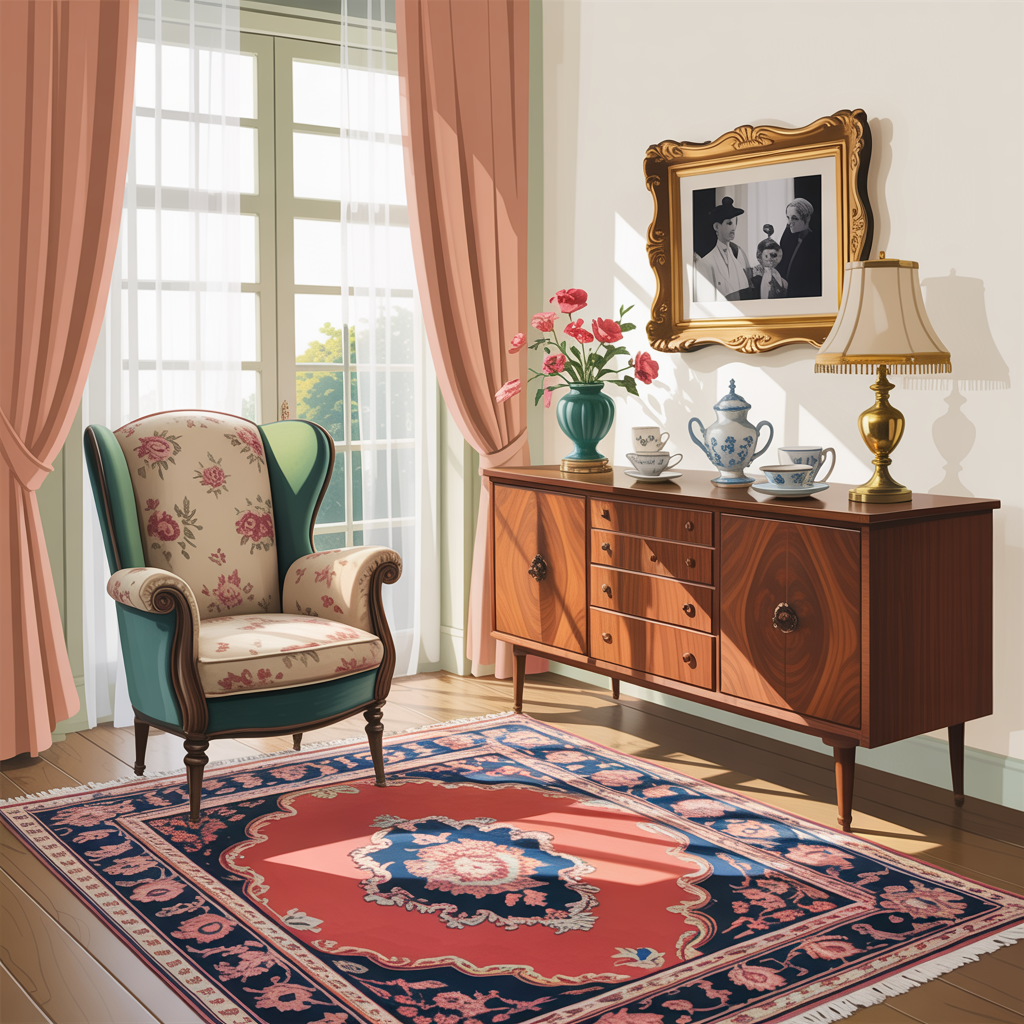
Mixing vintage pieces with contemporary items prevents your home from feeling like a museum and creates a collected-over-time aesthetic. Don’t be afraid to refinish or reupholster a great find to fit your current style. A single vintage piece can become a captivating conversation starter.
18. Focus on Functional Art
Move beyond traditional framed pictures. Functional art serves a purpose while being aesthetically striking. Think:
- A beautifully handcrafted ceramic vase holding fresh flowers.
- An intricately woven basket used for storage.
- A sculptural floor lamp.
- A unique, decorative mirror.
- A hand-blown glass fruit bowl.
- An artist-made throw blanket.
- A striking clock.
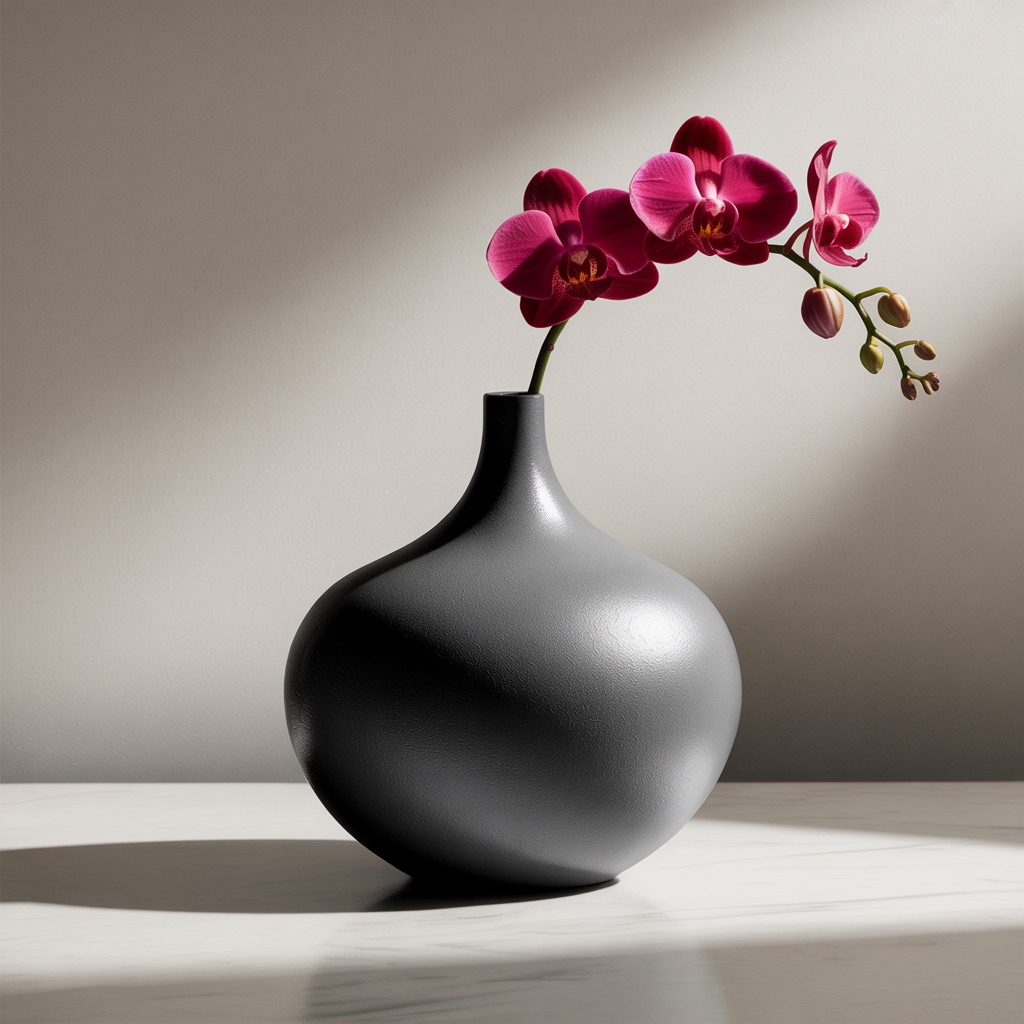
These pieces elevate everyday objects into design elements, adding personality and craftsmanship to your space. They are investments in both utility and beauty.
19. Curate a Cohesive Color Palette
A well-defined color palette is fundamental to a harmonious room. Start with a base of 1-3 dominant neutrals (walls, large furniture). Then, choose 1-2 main accent colors and perhaps 1-2 secondary accents. Use these colors consistently throughout the space – in upholstery, rugs, pillows, artwork, and accessories.
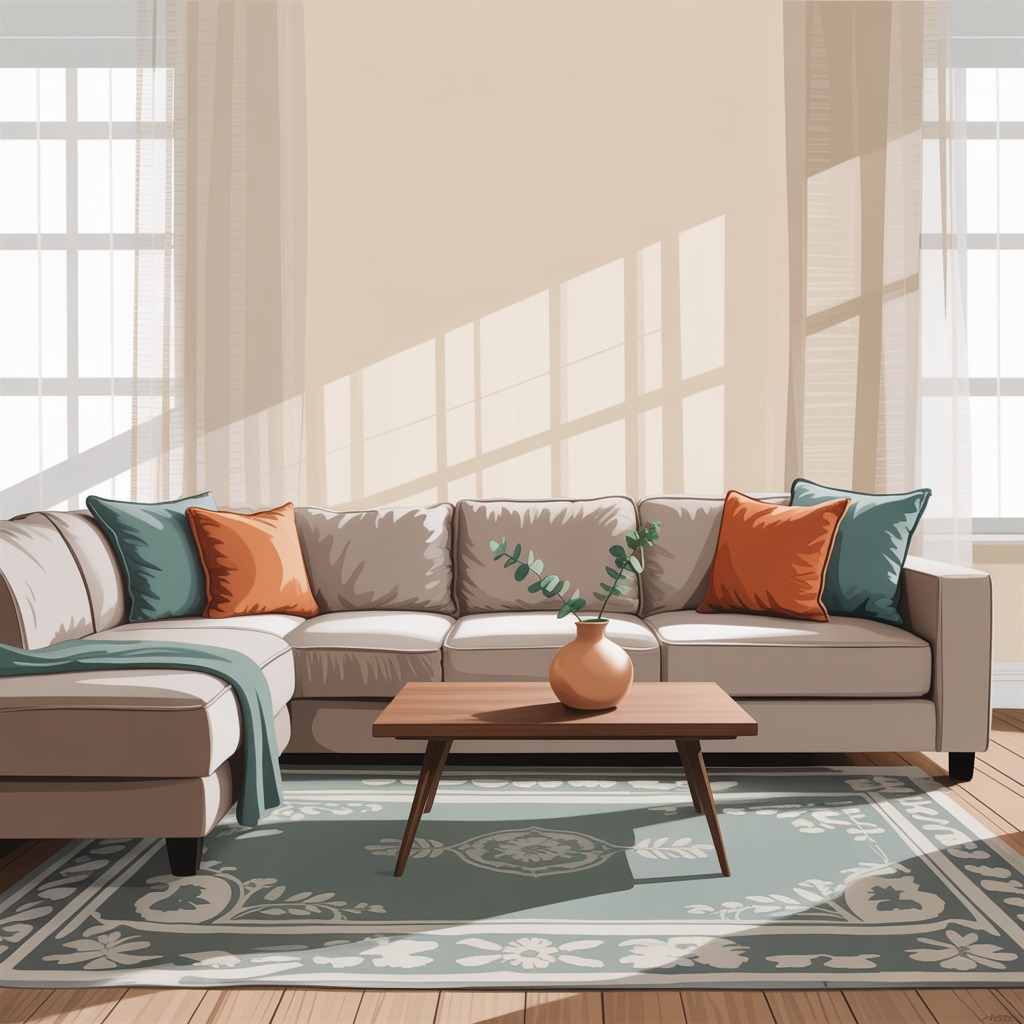
Consider the mood you want to create: calming blues and greens, energizing yellows and oranges, sophisticated neutrals with jewel tones. Don’t forget the power of tonal variations (using different shades and tints of the same color). A cohesive palette creates a sense of order and intentionality, making the room feel pulled together. Explore color psychology for inspiration.
20. Don’t Forget the Fifth Wall: The Ceiling
Often neglected, the ceiling is a massive opportunity to add surprise, character, or height. Painting it a different color than the walls instantly defines the space – a soft sky blue feels airy, a deep navy adds cozy intimacy, a crisp white brightens. Consider:
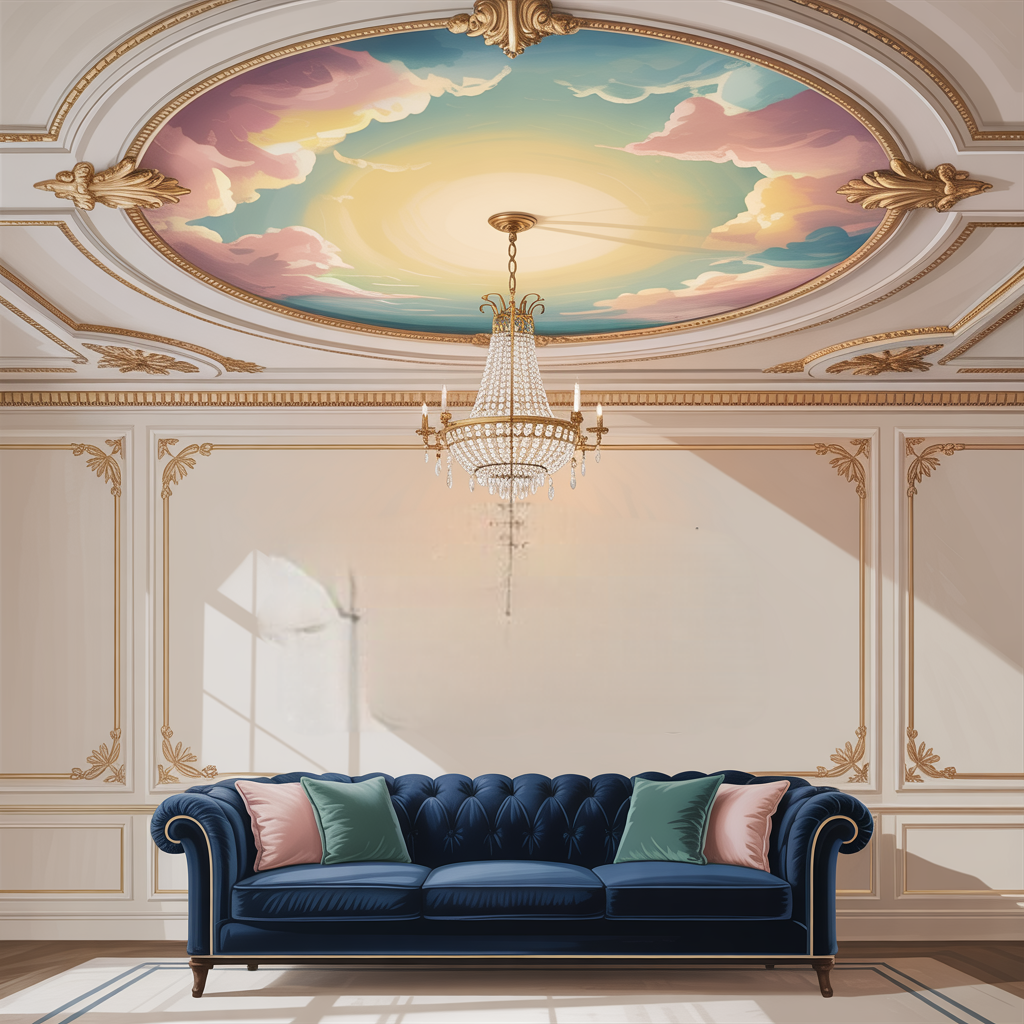
- Wallpaper: Especially effective in powder rooms or closets.
- Beadboard or Wood Planks: For cottage or rustic charm.
- Tray Ceilings: Add architectural depth, often painted an accent color inside the tray.
- Decorative Ceiling Tiles: For a touch of vintage elegance.
- Exposed Beams: Add rustic texture and architectural interest.
- A Statement Light Fixture: As mentioned in Idea #1, draws the eye up.
Treating the ceiling finishes the room, making it feel truly designed from every angle.
Transform Your Home, One Inspired Idea at a Time
Revitalizing your living space doesn’t require magic, just inspiration and a willingness to experiment. These 20 best room decor ideas offer a toolkit brimming with possibilities – from the dramatic impact of statement lighting and accent walls to the subtle warmth of layered textures and the life-affirming presence of indoor plants. Remember the power of strategic color pops, the illusion of mirrors, the definition from area rugs, and the personality unlocked through meaningful collections and vintage finds.
Whether you tackle a weekend hardware update or embark on creating the perfect gallery wall, each change contributes to a home that reflects your unique style and enhances your daily life. Start small, embrace the process, and don’t be afraid to mix, match, and make it yours. Your dream space is waiting to be uncovered, layer by beautiful layer. Ready for more? Explore our guide to choosing the perfect [link to internal page: Sofa for Your Living Room] or discover [link to internal page: Small Space Decorating Hacks]. Happy decorating!
